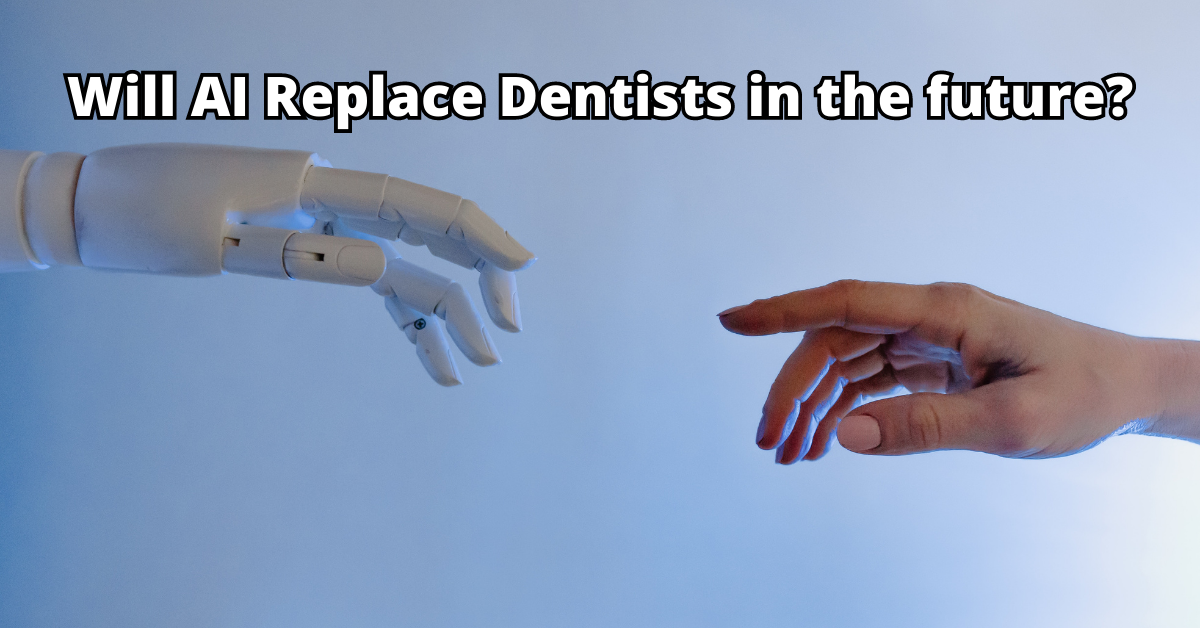Dental Artificial Intelligence: History, Present, and Future
Artificial intelligence is an expanding branch of computer science that has created intelligent machines that think like humans. These machines can learn complex topics across various fields. It can identify, reason, and even solve problems independently.
AI has invaded our lives in many ways, from virtual assistants like Siri and Alexa to cars that steer themselves. One such futuristic technology is Dental AI.
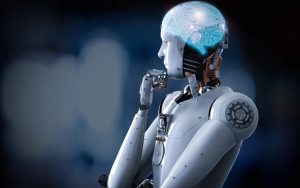
AI in dentistry has taken many routes to help dentists carry out treatment with precision. It identifies tooth erosion, creates customised patient treatment plans, and saves time. AI tools only need a split-second compared to manual examinations to spot a problem.
According to The Journal of Dental Research study, the CNN AI model could correctly classify tooth decay. This model looked at 2,417 single-tooth radiographs and correctly guessed the presence of decay 92.5% of the time.
The application of artificial intelligence in medicine is not recent, though. It’s used to classify skin lesions, diagnose breast cancer with up to 96% accuracy, and much more. AI assists medical experts in every phase of patient care. Machine learning has also allowed doctors to develop personalised care plans. They can predict the response of patients receiving specific treatment and provide better care while saving their time and resources. It shows that checking in with their robot assistance can make a doctor’s job much easier.
In this article, we’ll explore the role of artificial intelligence in dentistry. We will dive deep into its history, current implications, and thrilling possibilities for the future.
History of Dental AI: How old is it?
Although AI is a hot topic nowadays, it’s important to note that it’s not new. The concept of creating a computer that can think for itself has been around since 1950. In the years following World War II, Alan Turing explored the idea of machine intelligence. He wrote 36 pages about computer intellect in a paper titled “Computing Machinery and Intelligence”. His contribution proved to be the foundation on which modern computing was laid.
He also proposed what is now known as the ‘Turing Test.’ This test was the first to prove that computers could demonstrate human behaviour. Six years later, John McCarthy coined the term “Artificial Intelligence”. McCarthy founded the first-ever programming language called language symbolic computation (LISP). This concept paved the way for developing thousands of exciting technologies in the later years.
In the arena of dentistry, AI made its way through prosthodontics. This branch of Dental medicine focuses on replacing missing teeth and jaw structures with artificial models. In the 1990s, scientists designed computer-based models of human teeth with the help of Computer Aided Models (CAM). CAM could create 3D models of dental crowns based on a person’s preferences just by looking at their remaining teeth.
These models could then be printed out, making the whole manual procedure of casting prostheses easier and swift.
In 2007, machine learning was the first to analyse dental radiographs and images to look for tooth decay. After training on enough datasets, computers could more efficiently read radiographs and detect abnormalities in teeth than human experts. Since then, machine learning algorithms have become popular in dentistry. They are now used in analysing X-Rays and CBCT, detecting periodontal diseases, predicting treatment outcomes, and even diagnosing oral cancers.
Capabilities of AI today: What can it do?
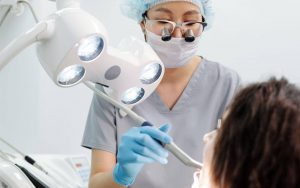
According to Robert Faellia, founder of the American Dental Association,
“Dentists are radiologists, surgeons, business people, marketing people, and more. If AI can help them to do all this better, there’s so much potential for space.”
Modern dental practices rely on intelligent computers to assist in various phases of patient care. These tools are accurate and much more efficient than man. They can work all day long without needing rest or getting bored. They take only a few seconds to make sense of tricky radiographs.
With its ability to accurately diagnose oral health conditions and provide accurate results in seconds, AI has markedly reduced the number of false diagnoses and unsatisfied patients.
Here are a few ways in which Dental AI is transforming the field of dentistry:
Detection of tooth decay
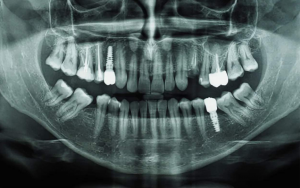
Dental caries is a fairly common condition in children and young adults. It affects about half of the population of the world. Early detection and prompt treatment of dental caries are the keys to preventing losing your teeth.
Before AI became their best friend, dentists would look for dental caries with a microscope. This manual procedure was uncomfortable and often missed hidden areas of teeth that were infected. With the rise of AI and the development of computer-aided detection (CAD) software, you can tell which teeth are affected only by looking at images. Compared to the naked eye, AI technology looks at X-rays at a pixel level. This microscopic view of details makes AI more capable of detecting tooth decay. These technologies point doctors toward probable diagnosis saving their time and resources.
CAD software can read dental X-rays, Cone-beam computed tomography systems (CBCT), and MRI. It labels the potential areas of cavities, bone loss, and other pathologies that can be missed during manual examination. No more uncomfortable and painful dental visits!
Detection of oral and maxillofacial pathology
AI predictive tools can tell whether a lesion in your mouth can grow cancerous. Thanks to machine learning, AI tools have become a promising aid to doctors in classifying diseases and predicting their course.
Recent research compared the ability of Dental AI to detect head and neck cancers with qualified dentists. While it took the professionals 23 minutes to discover cancers with 81% accuracy, AI produced similar results in only 38.7 seconds!
The study concluded that machine learning algorithms could improve oral cancer detection’s accuracy and efficiency and be a valuable diagnostic tool in clinical practice.
Uses of Dental AI in Teeth Alignment Treatment
Imagine being able to straighten your teeth without visiting your dentist’s office. Thanks to the advances in AI, it is now possible.
AI is already being used to transform the field of teeth straightening, and the results are nothing short of remarkable. ML software has been proficient at reading cephalometric and panoramic X-rays for years. It can recognise the mispositioning of teeth and abnormalities in jaw structures by looking at a radiograph. With advances in AI, dentists can now develop highly precise and customised braces and aligners.
Recent developments in AI have given birth to innovative software like Dental Monitoring Tools. With the help of DM, doctors can remotely monitor the progress of their treatment. Instead of visiting your dentist every 4-6 weeks, you can now get your teeth examined at home. By capturing high-quality intraoral pictures, this software helps you consult your doctor virtually. Your doctor can even pick up poor gum health and oral hygiene while monitoring your Invisalign treatment.
Uses of Dental AI in Prosthodontics

Using CAM/CAD models, dentists can now create custom-made prostheses tailored to the patient’s requirements. These models consider a person’s ethnicity, face dimensions, and demands. Based on the information, it calculates the size and shape of artificial teeth, gums, and bridges to be printed out. AI models have reduced the need for manual casting procedures, minimising the rates of human errors by almost 100%. Dentists can now design accurate prostheses, run the 3D models with seniors, and give them to patients quickly.
Bridges the Gap between You and Your Dentist
AI-powered software gives patients more autonomy. You can easily sense your oral condition by looking at AI-interpreted images. It helps you understand the treatment you’re getting and why it is essential. It keeps you aware of your condition and builds trust between you and your doctor, leading to better health outcomes.
Helps with administrative processes
Smart computers can schedule appointments and follow-ups, take paperwork into their hands, automatically generate invoices and do much more. Many dental offices have incorporated AI as virtual assistants to perform administrative jobs. It can also assist with taking the patient’s medical history and keeping it in records to be easily accessible to doctors.
Limitations of Dental AI
Can produce inaccurate results
While deep learning algorithms perform tasks in less time and resources, certain flaws make their supervision essential. In most cases, AI is smart and quick, but it has far more chances of producing inaccurate results. Deep learning algorithms learn from their mistakes. This process is slow and takes a lot of data sets to process its knowledge. Hence, relying entirely on a machine will not be an option, at least in the near future.
Susceptible to security risk
Cyber security is a primary concern in using AI tools to access data. There are strict rules regarding how patient data is stored and accessed. Feeding somebody’s health records to AI the data would violate their privacy.
Can produce unemployment
With the enhanced diagnostic ability of Dental AI, fewer qualified dentists would be needed to treat oral conditions. There will be less number of doctors, but their diagnoses will be accurate, and their decisions will be more confident.
Future of Dental AI: Will it take my job?
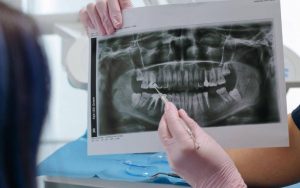
Artificial intelligence is on its way to modernise not just the field of dentistry but the whole world.
With unparalleled consistency and the ability to diagnose diseases quicker than dentists, AI does many things better than us.
Using AI-powered tools, we can look for dental decay, see infections at the end of tooth and bone levels, and even tell what would happen if we choose a particular treatment plan. But is it wise enough to replace dentists?
According to a survey, most patients were unhappy with AI putting their robotic hands inside their mouths. Others said they could not trust computers when it came to their health.
Empathy, creativity, and embracing uncertainty are a few inborn human characteristics that no AI can ever replicate. Among the million benefits of AI, treating medical diseases is not one.
Dentistry is a psychomotor craft performed with a skilled pair of hands. To be good at this profession requires years of training and hard work. Consulting AI helps doctors be more confident in their treatment plans. It provides them with the likelihood that they are doing the right thing.
So if you are a dentist, rest assured that nobody is coming to take over your job.
Ultimately, humans and machines do not have to compete. Dental AI has great potential for diagnosing and treating issues around the teeth. It can also reduce the overall workload on dentists and perform administrative tasks.
Analysing radiographs, recommending effective treatments, and predicting diseases before they occur are a few things AI is already doing.
Though it’s unlikely for AI to replace dentists anytime soon, it has made their jobs more manageable and less hectic. It takes administrative procedures, data analytics, and guess work into its hands so doctors can focus on providing treatment. The bottom line is that by leveraging machine learning algorithms dentists worldwide will successfully be able to improve the quality of care and develop more effective treatment strategies!

